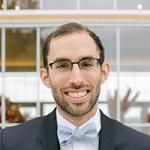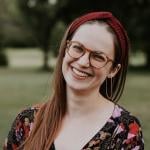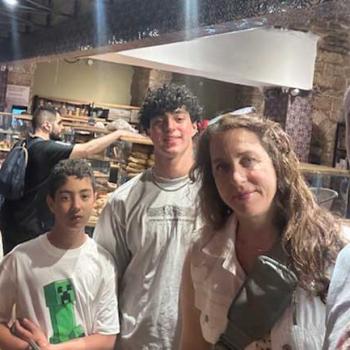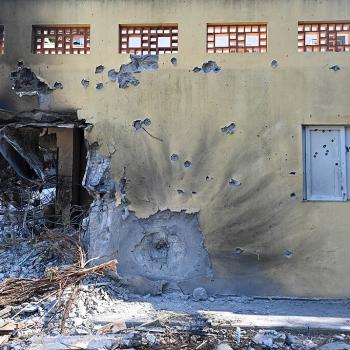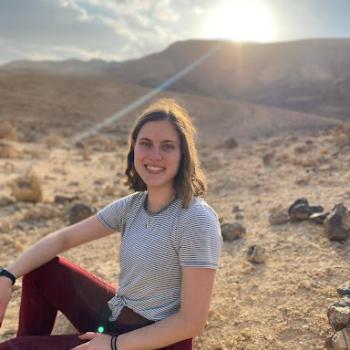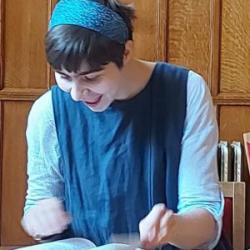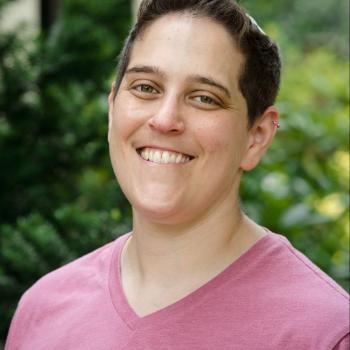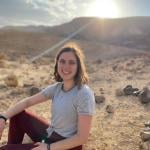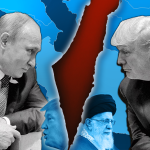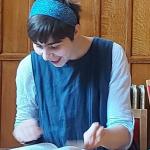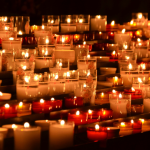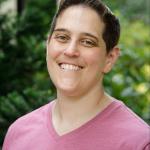Parashat Yitro Exodus 18:1-20:23
One of my favorite Yiddish folk songs begins “un mir zaynen ale brider, un mir zingen freylekhe lider (We are all brothers, we sing happy songs”.) Ale Brider is based on the poem Akhdes (Unity) by Morris Winchevsky. Additional lyrics with new expressions of unity have been added over time. “Un mir zaynen ale shvester (We are all sisters.”) Recent lyrics celebrate LGBTQ Jews, and I added a verse a few years ago for online gatherings. The staying power of this song lies in its insistence that Jews are a united people as it welcomes the voices and concerns of a dynamic community.
This week’s parsha, Yitro, holds one of the most iconic moments in the Israelites’ journey, God’s revelation at Mount Sinai. According to a popularly referenced midrash, all Jews of all times were there. Variants of this midrash explain how teachings taught generations later are considered Torah (Shemot Rabbah 28:6), how Jews-by-choice sense that they belong (BT Shavuot 39a), and how the moment of revelation resonates spiritually thousands of years later (Midrash Tanchuma, Nitzavim 3).
The word העם (“the people” or “the nation,”) appears frequently in this parsha, sometimes as כל-העם, (“the entire nation” or “all the people.”) What can we learn from the varied uses of “the nation” and “the whole nation?” Why is being whole, united, and inclusive important? Why do we find comfort, millenia later, in the idea that we were also there at Sinai?
The first references in the parsha to the nation are when Moses’ father-in-law, notably an outsider, arrives and finds Moses sitting in judgement all day long as people wait for him to settle their questions and disputes. Yitro refers to the whole nation three times in his advice, emphasizing the strain that waiting puts on the wellbeing and unity of the people. His advice to delegate, choosing judges from the whole people, prompts 20th century commentator Moshe David Cassuto to clarify that this means from all masses of the people, without restriction.
As the parsha turns toward the communal preparations and experience of revelation, there are three more references to the whole people. Before the big moment, Moses shares God’s intention that the people will become a kingdom of priests and a holy nation, and the whole nation responds נעשה ונשמע, “we will do it and listen to it” (Ex. 19:8). The moment the people accept peoplehood is one of absolute unity, as Cassuto puts it, “with one heart and one soul.” Other commentators agree and emphasize the intention to be one nation without spiritual hierarchies, who all hear God directly. In this vein, God plans to speak directly to the whole people from Mount Sinai (Ex. 19:11). Although not everyone can be a prophet, in this moment, God descends on the mountain in a way that each person experiences directly.
Just after the Ten Commandments, we read as follows: “All the people witnessed the thunder and lightning, the blare of the horn and the mountain smoking; and when the people saw it, they fell back and stood at a distance” (Ex. 20:15). The experience of God’s presence is attributed to the whole nation, while the falling back and distancing themselves is attributed to “the nation.” The moments of being “whole” seem to reflect God’s ideal while other moments of being simply “the nation” are based in limited human perspective. There is a goal momentarily attained at Sinai, in which unity of status, of heart, and of soul is achieved.
The midrash and commentaries on the “whole nation’s” experience of revelation suggest that in that moment of total connection and unity, no disabilities prevented anyone from experiencing the power of receiving Torah from the Divine. Revelation belonged to the whole people, regardless of how they each absorbed it individually.
The Ten Commandments constitute a mix of universal injunctions (prohibitions on murder and theft) and laws pertaining to God’s relationship with the Israelites. Shabbat holds a unique place in between. While it is particular to the Jewish people, it is rooted in the creation of the universe, before any distinction between Jews and others was drawn. Written into the commandment to remember Shabbat is a statement of unity. “לֹא־תַעֲשֶׂה כל־מְלָאכָה אַתָּה וּבִנְךָ͏־וּבִתֶּךָ עַבְדְּךָ וַאֲמָתְךָ וּבְהֶמְתֶּךָ וְגֵרְךָ אֲשֶׁר בִּשְׁעָרֶיךָ You shall not do any work—you, your son or daughter, your male or female slave, or your cattle, or the stranger who is within your settlements” (Ex. 20:10).
God’s notion of who constitutes the nation is expansive. By using representative examples, the text demonstrates that the “whole people” included significant diversity of age, gender, and social status.
One might ask: If everyone is included, why does the Torah not simply say, “you” and let us understand that we are all part of “you?” The rabbis understand that children are mentioned because a parent might think they could ask a minor child to do a task they were forbidden to do. A wealthy person might think their servant could do their work. The stranger (a non-Jewish person living in a Jewish community) must not be compelled to work for Jews’ benefit on Shabbat. Everyone deserves rest on Shabbat.
Shabbat has unified Jews across time and place, even as specific practices vary widely amongst communities. The model of unity we learn from Shabbat is exceptional: This commandment simultaneously constrains us and frees us. It belongs to the whole people serving to connect, equalize, and unite us. It shapes our interaction with other people and with the natural world. We are commanded to extend the benefits of Shabbat to everyone around us, but not to impose its constraints on the stranger.
In our times, division feels prevalent and unity elusive. Calls for unity often imply that if only other people would get on board all the world’s problems would disappear.
While unity is complex and challenging for human beings, it is natural for God. What would it look like to strive for an expression of unity more like God’s perspective in this parsha? What would it look like to insist on seeing our whole communities and societies as full of valuable people with a range of age, gender, economic status, talents, abilities, and perspectives? We who stood at Sinai together each hold within us access to the Divine spark. Imagine seeking that spark in one another, nurturing it and learning from it, embracing each other as siblings and joining in song together. It could be a revelation!
Rabbi Shira Shazeer received rabbinic ordination from the Rabbinical School of Hebrew College in 2010 and a Masters Degree in Jewish Education with a focus on special education in 2022. Previously, she studied Torah in the Scholars Circle at Drisha Institute for Jewish Learning and music at Goucher College. Rabbi Shazeer teaches in the learning center at Gann Academy. She is a Yiddish enthusiast, a singer, accordion player and occasional composer, and parent to three fabulous kids.


